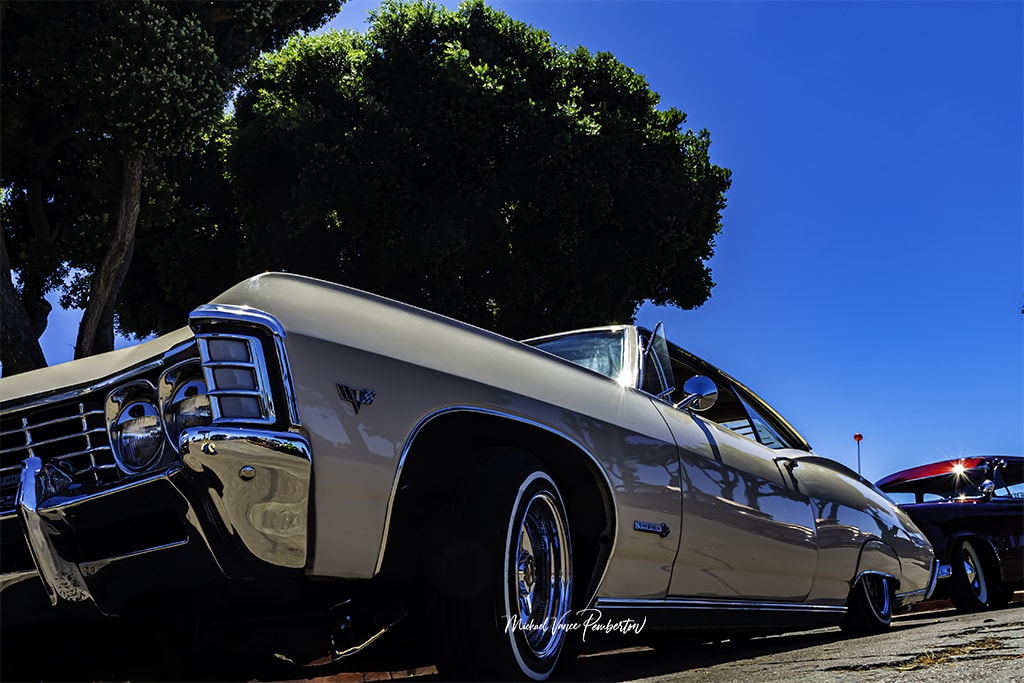
Photographing cars is a thrilling endeavor that allows photographers to capture the essence and beauty of these powerful machines. Creativity is key to standing out in the world of automotive photography truly. By blending technical skills with imaginative flair, photographers can produce captivating and visually stunning images of cars that evoke emotion and admiration. This article will explore various techniques and tips to photograph cars creatively, elevating your automotive photography to new heights.
Location and Background:
Selecting the right location and background is one of the foundational steps in automotive photography. The environment in which a car is photographed can significantly influence the image’s overall impact and emotional resonance. To create visually striking car photographs, photographers must carefully consider various elements that can complement the car’s style and personality.
Urban environments offer a dynamic backdrop for car photography, especially for modern and sleek car models. The juxtaposition of sharp lines and contours against the urban architecture can create a powerful visual contrast, emphasizing the car’s modernity and cutting-edge design. Skyscrapers, bridges, and busy streets can add an urban edge to the composition, amplifying the sense of power and speed associated with these vehicles.
On the other hand, industrial areas can provide a rugged and gritty aesthetic, ideal for capturing the raw power of vintage or classic cars. Rustic walls, weathered textures, and old factory structures can serve as evocative backgrounds that tell a story of the car’s history and enduring allure. The juxtaposition of vintage cars against an industrial backdrop can create a captivating narrative that takes the viewer back in time.
Natural landscapes can be the perfect choice for those seeking a more natural and serene setting. Whether it’s a winding mountain road, a tranquil lakeside, or a vast desert, nature’s beauty can enhance the car’s elegance and grace. Natural environments also allow for more experimentation with lighting, as the interplay of sunlight and shadows can add a sense of drama and depth to the photograph.
Regardless of the location chosen, it is essential to avoid cluttered backgrounds that compete for attention with the main subject—the car. Extraneous elements, such as other vehicles, signboards, or distracting objects, can draw the viewer’s eyes away from the vehicle itself. A clean and uncluttered backdrop allows the car to take center stage, ensuring that the viewer focuses on the vehicle’s design and details.
Photographers should also consider the location’s color palette and how it complements or contrasts with the car’s color. Harmonizing the surroundings with the car’s hue can create a pleasing and harmonious composition. Conversely, choosing a contrasting background can make the car pop and become the image’s focal point.
When scouting for locations, visiting potential sites beforehand to evaluate different angles and perspectives is beneficial. Consider how the car’s shape interacts with the environment from different viewpoints, and be open to unexpected discoveries that can lead to exceptional photographs.
The choice of location and background significantly impacts the visual storytelling of car photographs. Urban environments offer a modern and edgy aesthetic, industrial areas provide a rugged and vintage charm, and natural landscapes lend elegance and tranquility. By avoiding cluttered backgrounds and carefully harmonizing colors, photographers can create captivating images that showcase the car’s style, personality, and the unique emotions they evoke in viewers. So, take the time to scout diverse locations, experiment with angles, and let your creativity roam free to capture the essence of each car uniquely.
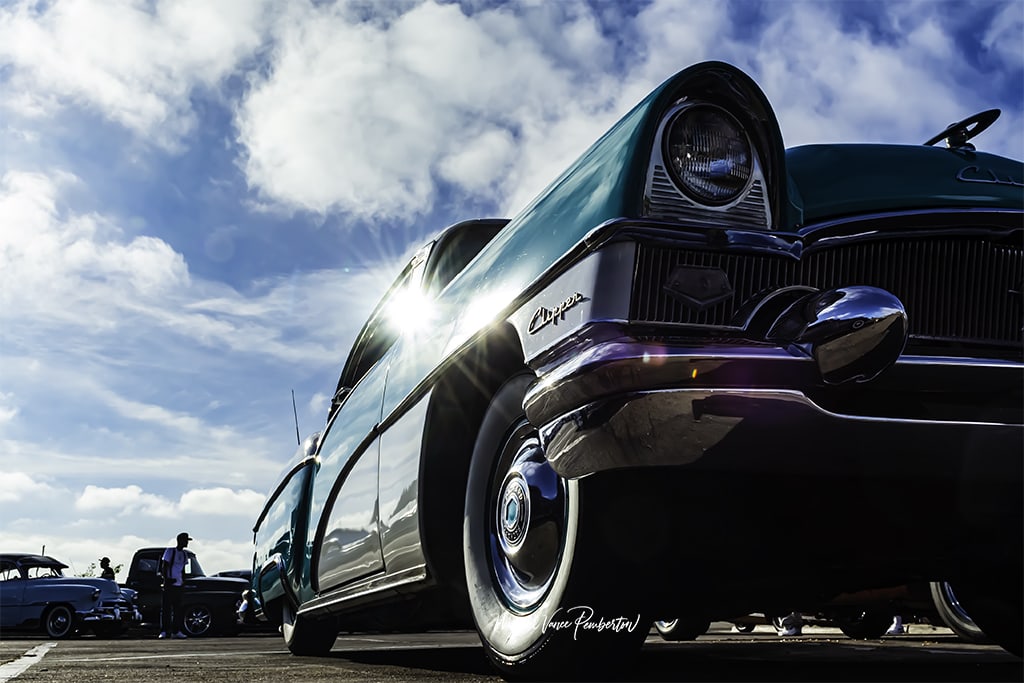
Lighting:
In automotive photography, lighting is a technical consideration and a powerful artistic tool that can make or break the final result. Mastering using light creatively can elevate car photographs to a new level, imbuing them with emotion, drama, and allure.
Natural light is a photographer’s best friend, and one of the most sought-after moments to capture cars in their best light is during the golden hour. This magical time occurs shortly after sunrise and just before sunset when the sun is low on the horizon, casting soft and warm rays across the landscape. The golden hour’s warm hues beautifully complement the curves and lines of the car, creating a sense of elegance and sophistication.
During the golden hour, the angle of the sunlight produces long shadows that enhance the car’s contours, adding depth and dimension to the photograph. This play of light and shade adds a three-dimensional feel to the car, making it appear more dynamic and lifelike. The magical ambiance of the golden hour imparts a sense of serenity and tranquility, making it a perfect time to capture stunning car portraits or showcase the car in scenic environments.
While the golden hour is celebrated for its soft and flattering light, the allure of automotive photography extends well into the night. Shooting cars under the stars opens up a realm of creative possibilities. Photographers can employ various lighting techniques to capture dramatic night shots, such as light painting and strategically placed artificial lights.
Light painting uses handheld or portable light sources to illuminate specific areas of the car selectively. Photographers can highlight the car’s distinctive features, such as its grille, headlights, or wheel rims, by carefully directing the light, creating captivating focal points. This technique allows for precise control over the lighting and emphasizes the car’s design artistically and uniquely.
Additionally, the strategic placement of artificial lights around the car can yield striking results. Placing lights at specific angles can accentuate the car’s shape, emphasizing its lines and contours in ways natural light cannot achieve. This method is particularly effective for highlighting textures and adding drama to the composition.
Moreover, experimenting with different colored gels on artificial lights can introduce creativity and vibrancy to night shots. Playing with colors allows photographers to create moods beyond the typical natural light ambiance, giving the images a distinct and artistic flair.
When shooting at night, it’s essential to maintain a steady hand or use a tripod to avoid camera shaking, especially when using longer exposure times. Long exposures can add a sense of motion to the scene if there are moving elements, such as cars passing by or city lights in the background.
Lighting is a powerful tool in automotive photography that can significantly impact the mood and atmosphere of the images. The golden hour provides a soft, warm glow that casts enchanting shadows, which is ideal for capturing the car’s elegance. On the other hand, night shots with light painting and artificial lighting techniques offer an opportunity for creativity, drama, and a touch of magic. Mastering these lighting techniques can help photographers craft visually stunning car photographs that evoke emotions and leave a lasting impression on viewers.
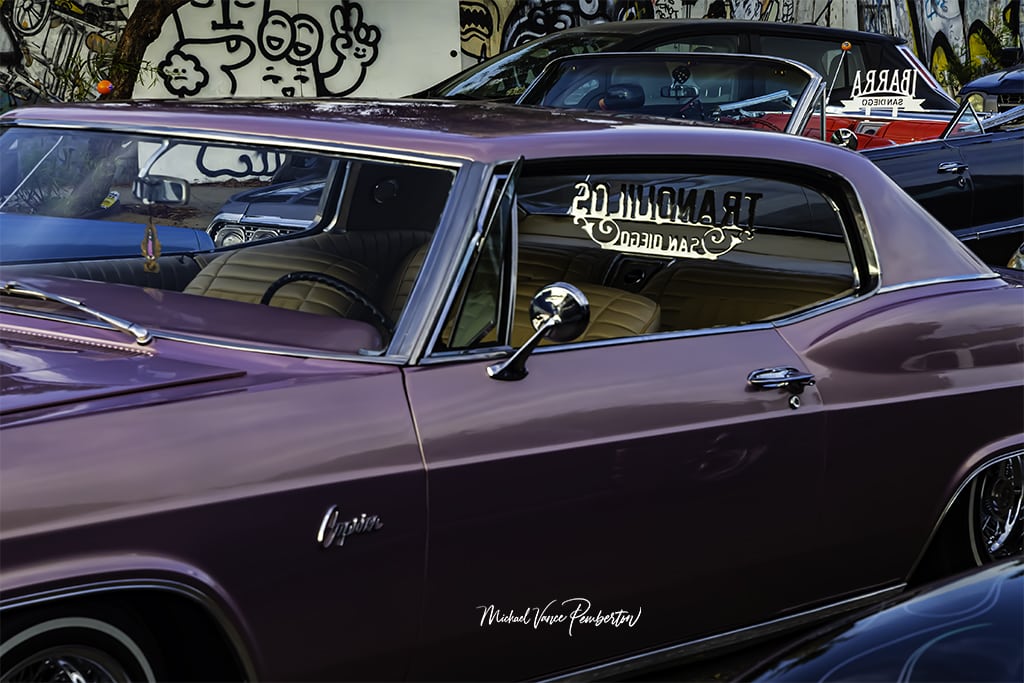
Composition and Perspective:
In car photography, exploring different angles and perspectives is like embarking on a thrilling adventure that can unlock new dimensions of creativity and visual impact. By breaking away from conventional shooting positions, photographers can capture cars in ways that evoke awe, curiosity, and admiration.
Shooting from a low angle is one of the most effective techniques to add drama and dynamism to car photographs. Getting down to the ground can create dramatic low-angle shots emphasizing the car’s presence and power. This perspective makes the car appear larger than life, exuding an aura of strength and dominance. Low-angle shots are incredibly impactful for capturing sports cars, supercars, and other high-performance vehicles, as they amplify the sense of speed and agility associated with these machines.
Wide-angle lenses are another valuable tool in a car photographer’s arsenal. These lenses have a broad field of view and can exaggerate the car’s lines, curves, and proportions. The distortion introduced by wide-angle lenses can give the car a more imposing and powerful appearance, making it stand out from the background. When using wide-angle lenses, it’s crucial to balance exaggeration and realism, ensuring that the car’s proportions remain visually pleasing and faithful to reality.
Beyond conventional shooting techniques, reflections offer an innovative way to create stunning and unique car photographs. Water bodies, polished surfaces, or even wet streets after rainfall can all be reflective canvases for automotive photography. Photographers can capture mesmerizing symmetrical compositions by strategically positioning the car relative to the reflective surface. Reflections can add depth and complexity to the image, making it appear like a surreal work of art.
The creative use of reflections is not limited to symmetrical compositions; it can also introduce interesting visual juxtapositions. For example, reflections can capture the car alongside other elements of the environment, such as buildings, trees, or landscapes. This technique allows photographers to create images that blend reality and illusion, prompting viewers to look twice and appreciate the ingenuity of the composition.
Another way to explore perspectives is by shooting through different environmental elements. For instance, capturing the car through the branches of a tree, a fence, or an archway can add an intriguing frame within the frame. These framing elements draw attention to the car and create a sense of depth and context, enhancing the storytelling aspect of the photograph.
Be bold, move around the car, and try multiple viewpoints when experimenting with angles and perspectives. The beauty of digital photography lies in its flexibility, allowing you to review and adjust your shots instantly. Play with composition, framing, and focal length to discover the most compelling perspectives that bring out the essence and character of the car.
The magic of car photography lies in exploring angles and perspectives that breathe life into static subjects. Low-angle shots amplify the car’s presence and power, while wide-angle lenses exaggerate its lines and proportions. Reflections introduce a touch of artistry and symmetry while framing elements add depth and context. By daring to break free from traditional shooting positions and embracing experimentation, photographers can unlock a fresh dimension of creativity that elevates their car photographs to a realm of captivating and visually stunning storytelling.
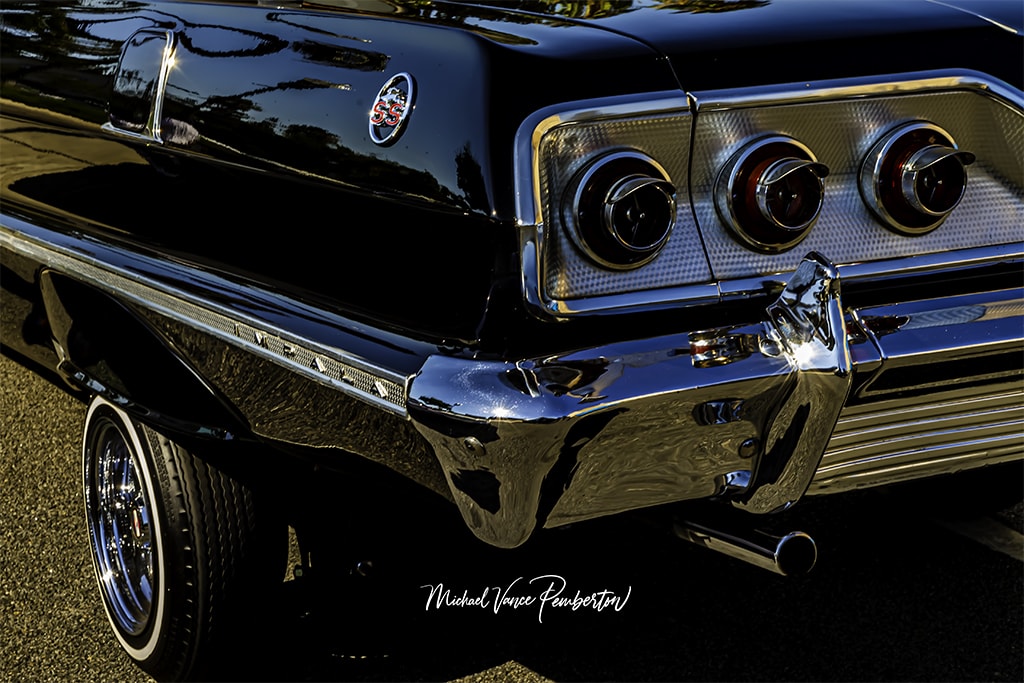
Detail Shots:
In automotive photography, attention to detail can make a significant difference in the overall impact of the final images. While capturing the entire car is undoubtedly essential, zooming in on specific information can be creative and offer a fresh perspective showcasing the car’s craftsmanship and uniqueness.
Each car is a work of art, meticulously designed and crafted with intricate details that often go unnoticed when viewed as a whole. By zeroing in on these small but significant elements, photographers can highlight the essence and personality of the car in a way that full shots may not capture. Emphasizing details such as the emblem, headlights, or rims can reveal the car’s brand identity, character, and design philosophy.
The emblem, often positioned prominently on the front grille or the car’s rear, is like the car’s signature. It represents the brand’s identity and can convey a sense of luxury, elegance, or power. Capturing the emblem up close showcases the brand and draws attention to the fine craftsmanship and attention to detail.
The headlights, as the car’s ” eyes, ” hold a captivating charm of their own. Whether sleek and futuristic or classic and round, headlights are essential design features that significantly influence a car’s visual identity. Photographing them up close can reveal intricate patterns, textures, and the interplay of light and shadow, bringing out the car’s distinct character.
Rims, with their unique designs and finishes, are another aspect of the car that photographers can focus on. Rims contribute to the car’s overall aesthetics and performance, and capturing their details allows viewers to appreciate the precision and artistry of their creations.
Macro lenses are precious to achieve the level of detail required for such shots. These specialized lenses are designed to capture minute details with stunning clarity and sharpness. With a macro lens, photographers can fill the frame with the chosen element, producing visually engaging images that tell a story of exquisite craftsmanship.
When photographing details, paying attention to lighting and composition is essential. Soft, diffused lighting helps bring out the textures and intricate details, avoiding harsh shadows distracting from the subject. Composing the shot to emphasize lines and patterns can create a visually appealing and harmonious composition.
Moreover, detail shots can be used effectively in automotive advertising, brochures, or social media campaigns, where showcasing specific features can help to pique the interest of potential buyers and enthusiasts. These shots can also be used as a teaser or a sneak peek into a car’s design before its official launch, building anticipation and excitement.
Focusing on specific details in automotive photography can be creatively rewarding, revealing the essence and craftsmanship of the car. Emphasizing elements such as emblems, headlights, or rims offers a fresh perspective and highlights the vehicle’s unique character. Using macro lenses ensures that every fine detail is captured with clarity and precision, elevating the images to a level of visual engagement that can captivate viewers and effectively convey the car’s essence.
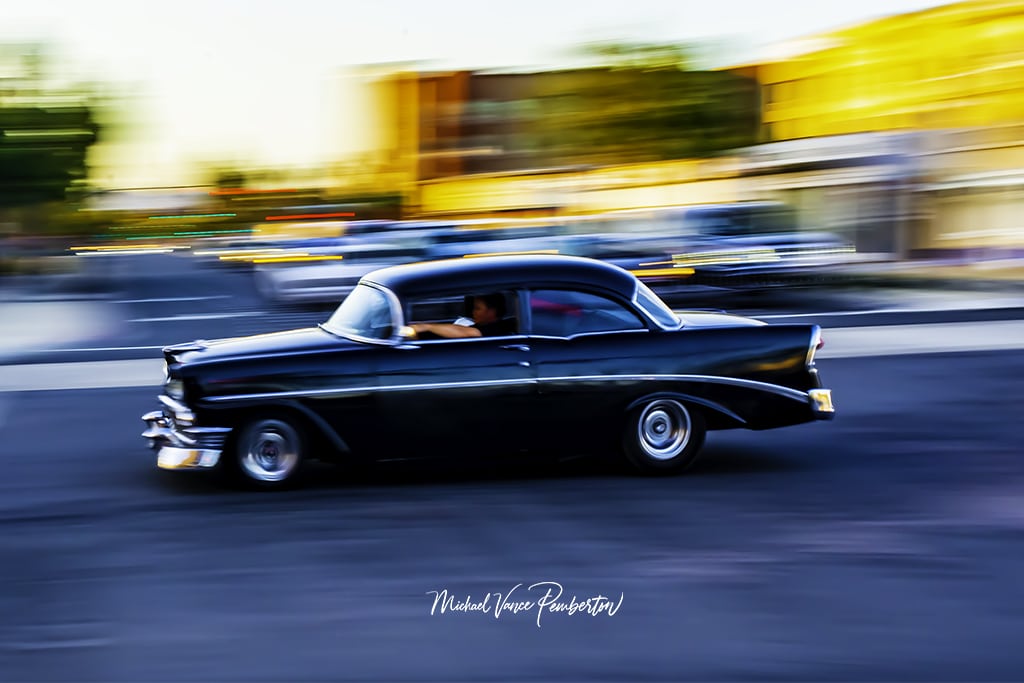
Motion and Action:
Injecting a sense of motion and action into car photography is a thrilling endeavor that can add a dynamic and exhilarating dimension to the images. However, capturing cars in motion challenges and requires a careful balance between creativity and safety. As a responsible photographer, prioritize safety when attempting action shots and take necessary precautions to avoid accidents or hazards.
Photographing cars in motion requires understanding camera settings, techniques, and proper positioning. Scrolling a safe location with ample space and minimal traffic is crucial to execute these shots effectively. Additionally, seeking permission and cooperation from the car’s driver or owner is essential to ensure a smooth and safe photography session.
One popular technique used in action car photography is panning. Panning involves tracking the moving car with your camera using a slow shutter speed. By keeping the car in focus while blurring the background, this technique creates a strong sense of speed and dynamism. Panning requires practice and steady hand-eye coordination, but it can produce breathtaking results when executed well.
A slow shutter speed can also help capture motion blur in the car’s wheels or background elements while keeping the vehicle in sharp focus. This technique gives a feeling of speed and action, making the car appear like it’s slicing through the scene with incredible velocity.
To achieve the best results, it’s essential to experiment with different shutter speeds and motion techniques. Try various angles and positions to find the most visually appealing and dynamic compositions. Remember that not every shot will perfectly capture motion, but continuous practice and experimentation will improve your skills over time.
Aside from capturing motion on the road, incorporating dynamic elements can excite action shots. For example, shooting cars on racetracks or during motorsport events can create intense and captivating imagery. The adrenaline-fueled atmosphere of these events adds an extra layer of drama to the photographs, capturing the raw power and energy of the car in its elements.
Post-processing can further enhance the impact of action shots.
Adjusting contrast, highlights, and shadows can make the car pop while maintaining a sense of realism. However, it’s essential to appropriately budget the images, as this can compromise the authenticity of the action and the essence of the car.
Injecting a sense of motion and action into car photography can be an exhilarating challenge that brings cars to life in visually striking ways. However, it’s crucial to prioritize safety and obtain the necessary permissions when attempting action shots. Techniques such as panning and using slow shutter speeds can convey a powerful sense of speed and dynamism, creating captivating images that evoke excitement and admiration. With patience, practice, and a passion for photography and cars, action shots can be a compelling addition to any automotive photographer’s portfolio.
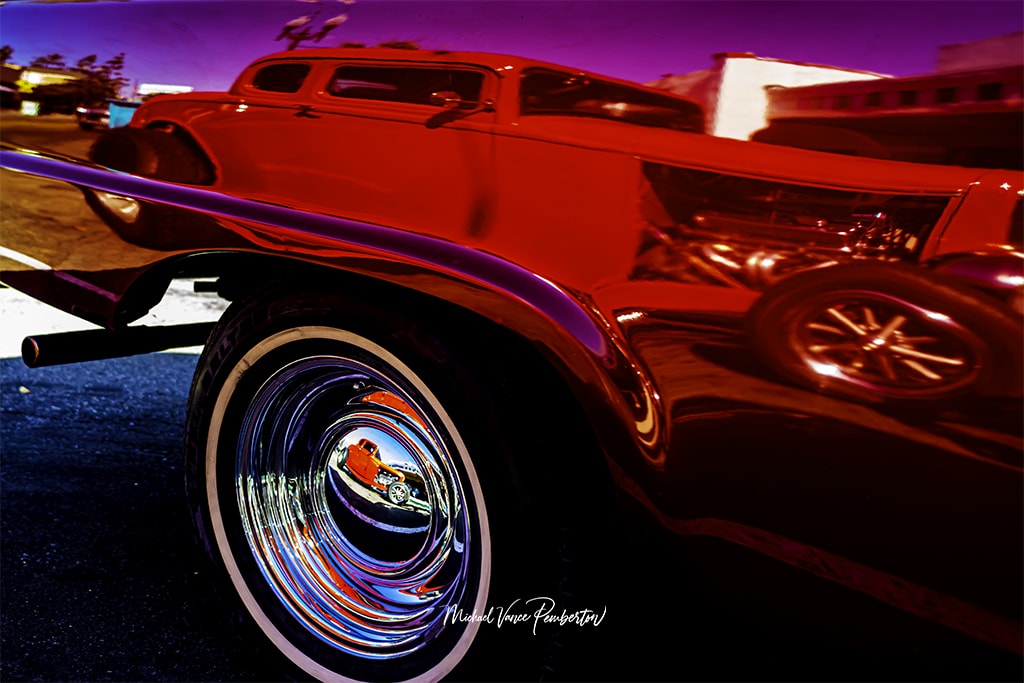
Experiment with Editing:
Post-processing is a critical phase in digital photography, allowing photographers to fine-tune and enhance their images to match their creative vision. Regarding car photography, post-processing offers an opportunity to elevate the mood and visual impact of the photographs, making them truly stand out.
Color grading is one of the most potent tools in post-processing, allowing photographers to manipulate the colors in the image to achieve a specific look or atmosphere. Whether aiming for a vibrant and energetic mood or a moody and dramatic tone, color grading can transform the entire feel of the photograph. Adjust the white balance, saturation, and hue to find the perfect combination that complements the car’s design and the overall vibe you want to convey.
Another crucial element to consider during post-processing is contrast. Adjusting the contrast can make the image appear more dynamic and visually engaging. Enhancing the difference between highlights and shadows can add depth and dimension to the car’s contours and emphasize its lines and features. However, it’s essential to strike a balance and contrast appropriately, as it can lead to a loss of detail and a less realistic representation of the car.
Additionally, editing techniques like dodging and burning can selectively lighten or darken specific areas of the image. This can be particularly useful in highlighting specific details or drawing the viewer’s attention to essential elements of the car.
As with any post-processing work, moderation is key. It’s easy to get carried away with editing tools and make the image look unrealistic or overly processed. Maintaining the car’s authenticity is crucial, especially if you’re photographing a classic or vintage vehicle, as viewers often appreciate the car’s beauty in its original form. Strive for subtlety and restraint in your editing, focusing on enhancing the image rather than completely transforming it.
While post-processing can be an exciting way to express your creativity and add a personal touch to your car photographs, it’s essential to keep in mind the balance between artistic interpretation and maintaining the essence of the subject. The ultimate goal is to create visually stunning images that resonate with viewers and evoke an emotional response.
To ensure the best results, saving different versions of your edits as you work is a good practice. This way, you can compare various adjustments and see which best aligns with your vision for the photograph. Don’t be afraid to experiment and step out of your comfort zone, as it’s through experimentation that you can discover new and exciting ways to showcase the beauty of the cars you photograph.
Post-processing is a powerful tool that allows photographers to unleash their creativity and elevate their car photographs to new heights. Color grading, contrast adjustments, and other editing techniques can set the mood and enhance the visual impact of the images. However, it’s essential to balance artistic enhancement and maintaining the car’s authenticity. Subtle and tasteful editing can often have a more profound and lasting impact on viewers, creating images that showcase the beauty of the vehicles while adding a personal artistic touch.
Conclusion:
Photographing cars creatively allows you to infuse your passion for photography with your love for automobiles. By exploring various locations, lighting techniques, compositions, and perspectives, you can elevate your automotive photography to new heights. Creativity knows no bounds, so don’t be afraid to push the envelope and experiment with your unique style. Whether you’re a seasoned automotive photographer or just starting, the journey toward creating visually stunning car photographs is both fulfilling and rewarding. So grab your camera, find that perfect car, and embark on a creative journey celebrating these remarkable machines’ beauty and power.


Recent Posts
In shadows cast by love's deceitful guise,He wandered blind, his heart the captive prize.Through realms unknown, where truth remained concealed,He followed trails of falsehood, unrevealed. Blinded...
Prepare to be amazed as the MCAS Cherry Point Air Show returns on May 11-12. This annual event, hosted by the Marine Corps Air Station (MCAS) Cherry Point in North Carolina, promises a weekend of...